
|
|
Conference Location
|
|
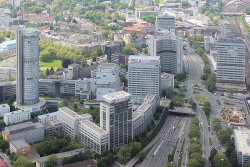
|
Today, three-quarters of the working population of what was once the biggest coal mining city in Europe are employed in administration, the service industries and commerce. Some of the German companies with the highest turnovers have their administrative headquarters in Essen, including RWE AG, Evonik Industries (formerly RAG-Aktiengesellschaft), EON Ruhrgas AG, Karstadt Warenhaus GmbH and Hochtief AG. Thyssen-Krupp AG has its new headquarters on the historical site of the Krupp steel casting factory, |
History |
In German-speaking countries, the name of the city Essen often causes confusion as to its origins, because it is commonly known as the German infinitive of the verb for the act of eating, and/or the German noun for food. Although scholars still dispute the interpretation of the name, there remain a few noteworthy interpretations. The oldest known form of the city's name is Astnide, which changed to Essen by way of forms such as Astnidum, Assinde, Essendia and Esnede. The name Astnide may have referred either to a region where many ash trees were found or to a region in the East (of the Frankish Empire). The Old High German word for fireplace, Esse, is also commonly mentioned due to the industrial history of the city, but is highly unlikely since the old forms of the city name originate from times before industrialization. |
The oldest archaeological find, the Vogelheimer Klinge, dates back to 280,000 – 250,000 BC. It is a blade found in the borough of Vogelheim in the northern part of the city during the construction of the Rhine–Herne Canal in 1926.Other artifacts from the Stone Age have also been found, although these are not overly numerous. Land utilization was very high – especially due to mining activities during the Industrial Age – and any more major finds, especially from the Mesolithic era, are not expected. Finds from 3,000 BC and onwards are far more common, the most important one being a Megalithic tomb found in 1937. Simply called Steinkiste (Chest of Stone), it is referred to as "Essen's earliest preserved example of architecture".
|
Essen was part of the settlement areas of several Germanic peoples (Chatti, Bructeri, Marsi), although a clear distinction among these groupings is difficult.The Alteburg castle in the south of Essen dates back to the 1st or 2nd century BC, the Herrenburg to the 8th century AD.Around 845, Saint Altfrid (around 800–874), the later Bishop of Hildesheim, founded an abbey for women (coenobium Astnide) in the centre of present-day Essen. The first abbess was Altfrid's relative Gerswit. In 799, Saint Liudger had already founded Benedictine Werden Abbey on its own grounds a few kilometers south. The region was sparsely populated with only a few smallholdings and an old and probably abandoned castle. Whereas Werden Abbey sought to support Liudger's missionary work in the Harz region (Helmstedt/Halberstadt), Essen Abbey was meant to care for women of the higher Saxon nobility. |
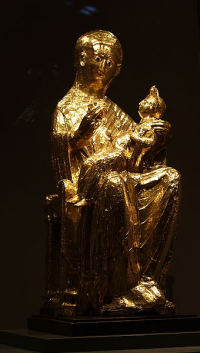
|
Around 852, construction of the collegiate church of the abbey began, to be completed in 870. A major fire in 946 heavily damaged both the church and the settlement. The church was rebuilt, expanded considerably, and is the foundation of the present Essen Cathedral. The first documented mention of Essen dates back to 898, when Zwentibold, King of Lotharingia, willed territory on the western bank of the River Rhine to the abbey.
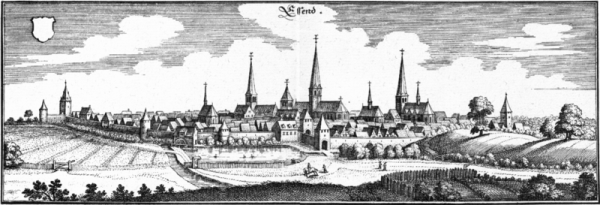

|
In 971, Mathilde II, granddaughter of Emperor Otto I, took charge of the abbey. She was to become the most important of all abbesses in the history of Essen. She reigned for over 40 years, and endowed the abbey's treasury with invaluable objects such as the oldest preserved seven branched candelabrum, and the Golden Madonna of Essen, the oldest known sculpture of the Virgin Mary in the western world. Mathilde was succeeded by other women related to the Ottonian emperors: Sophia, daughter of Otto II and sister of Otto III, and Teophanu, granddaughter of Otto II. It was under the reign of Teophanu that Essen, which had been called a city since 1003, received the right to hold markets in 1041. Ten years later, Teophanu had the eastern part of Essen Abbey constructed. Its crypt contains the tombs of St. Altfrid, Mathilde II, and Teophanu herself. |
In 1216, the abbey, which had only been an important landowner until then, gained the status of a princely residence when Emperor Frederick II called abbess Elisabeth I Reichsfürstin (Princess of the Empire) in an official letter. In 1244, 28 years later, Essen received its town charter and seal when Konrad von Hochstaden, the Archbishop of Cologne, marched into the city and erected a city wall together with the population. This proved a temporary emancipation of the population of the city from the princess-abbesses, but this lasted only until 1290. That year, King Rudolph I restored the princess-abbesses to full sovereignty over the city, much to the dismay of the population of the growing city, who called for self-administration and imperial immediacy. The title free imperial city was finally granted by Emperor Charles IV in 1377. However, in 1372, Charles had paradoxically endorsed Rudolph I's 1290 decision and hence left both the abbey and the city in imperial favour. Disputes between the city and the abbey about supremacy over the region remained common until the abbey's dissolution in 1803.
|
In 1563, the city council, with its self-conception as the only legitimate ruler of Essen, introduced the Protestant Reformation. The Catholic abbey had no troops to counter this development. During the Thirty Years' War, the Protestant city and the Catholic abbey opposed each other. In 1623, princess-abbess Maria Clara von Spaur, Pflaum und Valör, managed to direct Catholic Spaniards against the city in order to initiate a Counter-Reformation. In 1624, a "re-Catholicization" law was enacted, and churchgoing was strictly controlled. In 1628, the city council filed against this at the Reichskammergericht. Maria had to flee to Cologne when the Dutch stormed the city in 1629. She returned in the summer of 1631 following the Bavarians under Gottfried Heinrich Graf zu Pappenheim, only to leave again in September. She died 1644 in Cologne. |
|
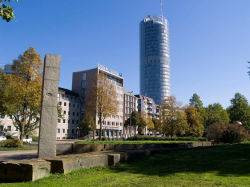 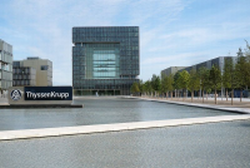 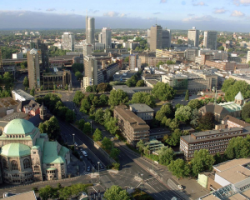
|
The first historic evidence of the important mining tradition of Essen date back to the 14th century, when the princess-abbess was granted mining rights. The first silver mine opened in 1354, but the indisputably more important coal was not mentioned until 1371, and coal mining only began in 1450. At the end of the 16th century, many coal mines had opened in Essen, and the city earned a name as a centre of the weapons industry. Around 1570, gunsmiths made high profits and in 1620, they produced 14,000 rifles and pistols a year. The city became increasingly important strategically. |
Riots broke out in February 1917 following a breakdown in the supply of flour. There were then strikes in the Krupp factory As a major industrial centre, Essen was a target for allied bombing. Over 270 air raids were launched against the city, destroying 90% of the centre and 60% of the suburbs. On 5 March 1943 Essen was subjected to one of the heaviest air-raids of the war. 461 people were killed, 1,593 injured and a further 50,000 residents of Essen were made homeless. On 13 December 1944 three British airmen were lynched. The Allied ground advance into Germany reached Essen in April 1945. The US 507th Parachute Infantry Regiment of the 17th Airborne Division, acting as regular infantry and not in a parachute role, entered the city unopposed and captured it on 10 April 1945. Although no weaponry is produced in Essen any more, old industrial enterprises such as ThyssenKrupp and RWE remain large employers in the city.
Parts of this text were copied from 
Conference Venue
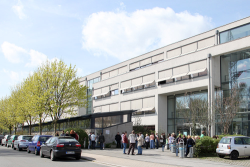 |
The conference venue will be the |
How to reach Essen and the conference venue 
Situated centrally in the Rhine/Ruhr region, Essen is connected to an extensive traffic network. From all over Germany and from abroad Essen is easy to reach from all directions by car, train, plane, and even by water. Within the Verkehrsverbund Rhein-Ruhr Essen provides a comprehensive local passenger transport service within the city and beyond, via its extensive links with the region.
By Plane |
Connection to Düsseldorf Airport: |
By Train |
To Essen Main Station Deutsche Bahn provides several connection from all over Germany by IC, EC or ICE trains. For further information visit www.bahn.de |
By S-Bahn, Tram and Metro |
Essen Main Station - Hollestraße - Nr 145/ 146/ 154/ 155/ 166/ 196/ SB 16 - |
By Bus
|
Essen Main Station - Hollestraße - Nr 145/ 146/ 154/ 155/ 166/ 196/ SB 16 - |
By Car |
You can reach Essen easily by car because several motorways are located in and around Essen (see map). Take the A 40, Exit 24 Essen-Huttrop in Direction Centre, after some 500 m turn right into Herkulesstraße. Follow the signs „FOM-Hochschule - SHZ I”. |
By Taxi
|
to be added |
On Foot
|
Some ca. 10 minutes from the Main Station "Hauptbahnhof" |
Essen Maps
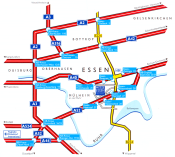
Motorway Map |
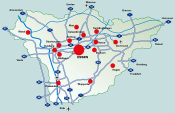
S-Bahn Connections to Essen |
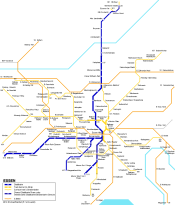
Public Transport in Essen |
Click on the maps above for a more detailed view



 With ca. 570,000 inhabitants,
With ca. 570,000 inhabitants, 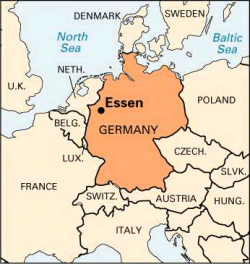
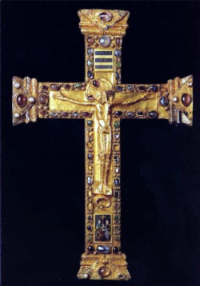

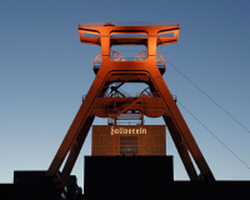
 Tel: +49.(0)201 8100.4444
Tel: +49.(0)201 8100.4444 Fax: +49.201.8100.4990
Fax: +49.201.8100.4990 Email:
Email: 





















